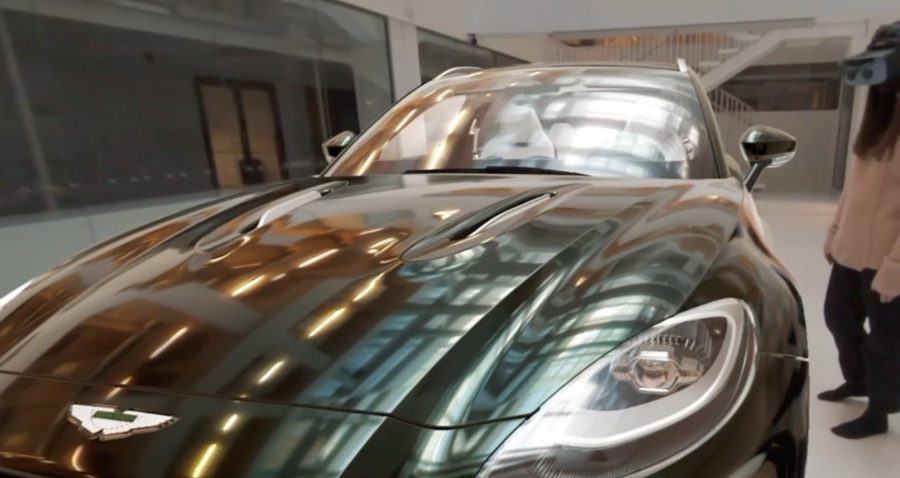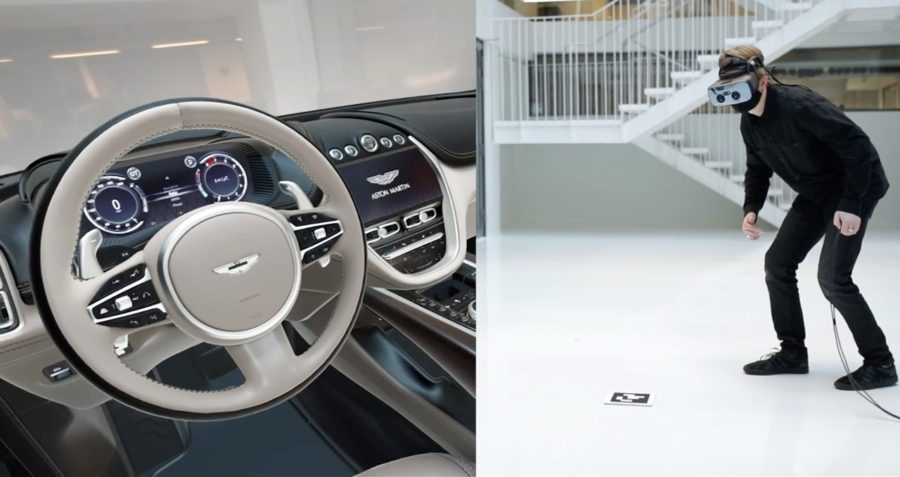
In Augmented Reality, Virtual Reality and Mixed Reality News
May 20, 2021 – Car manufacturer Aston Martin is using the latest virtual, augmented and mixed reality (VR/AR/MR – collectively extended reality or ‘XR’) technologies to drive new experiences for its customers and designers. The company worked with Lenovo and Varjo, a provider of “human eye resolution” XR headsets, to deliver an immersive experience that allows customers to explore its first luxury SUV, the Aston Martin DBX, without physically being in dealerships or offices.
The demo, which users experience using Varjo’s XR-3 headset, is rendered from a Lenovo ThinkStation P620 powered by NVIDIA RTX A6000 graphics and consists of over 10 million polygons, enabling users to view incredibly detailed, photorealistic visuals in virtual, augmented and mixed reality.
“It’s our partnership with Lenovo workstations — and in particular, ThinkStation P620 — which has enabled us to take this to the next level,” said Pete Freedman, Vice President and Chief Marketing Officer of Aston Martin Lagonda. “Our aim has always been to provide our customers with a truly immersive experience, one that feels like it brings them to the center of the automotive product, and we’ve only been able to do this with the NVIDIA RTX A6000.”
Customers would typically visit Aston Martin dealerships, attend motor shows or tour the manufacturer’s facilities in the UK to explore the latest car models. A team would walk them through the design and features in person, but due to remote work arrangements, Aston Martin decided to take a fresh look at what was possible and investigate options to take the experience directly to customers — virtually.

Participants enter the immersive environment and see a pixel-perfect representation of the Aston Martin DBX. They are able to explore the virtual vehicle from anywhere in the world and see details such as the stitching and lettering on the steering wheel, leather and chrome accents, and even the reflections within the paint.
The real-time reflections and illumination in the demo are enabled by Varjo’s pass-through mixed reality technology. The Varjo XR-3 headset’s LiDAR with RGB Depth Fusion using NVIDIA’s Optical Flow is a key piece of hardware that gives users the perception that the car is in the room, seamlessly blending the real world and virtual car together.
The NVIDIA RTX A6000 is based on the NVIDIA Ampere GPU architecture and delivers a 48GB frame buffer, which allows teams to create high-fidelity VR and AR experiences with consistent framerates, according to NVIDIA. Mike Leach, Worldwide Solution Portfolio Lead at Lenovo, said: “You need large GPU frame buffers to build the most photorealistic experiences, and that’s exactly what the NVIDIA RTX A6000 delivers.”
The company also added that Aston Martin will be expanding its use of VR and XR to further enhance internal workflows as well. By utilizing the technology, the automaker’s design teams will be able to work in virtual environments and iterate more quickly earlier in the process, instead of creating costly models.
Image credit: NVIDIA
About the author
Sam is the Founder and Managing Editor of Auganix. With a background in research and report writing, he has been covering XR industry news for the past seven years.
